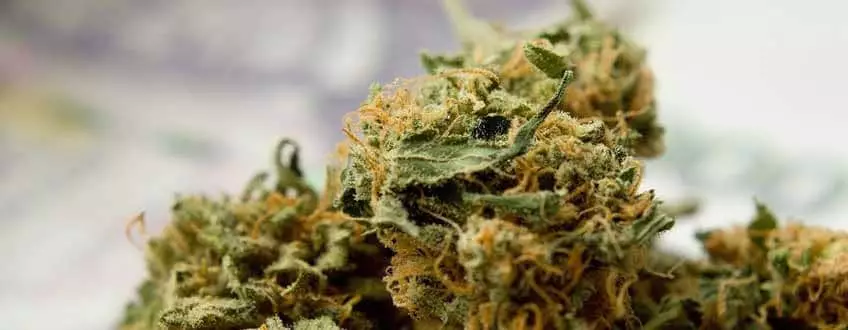Can cannabis be used as a treatment for skin conditions such as dermatitis and acne? Dr Viola Brugnatelli from Cannabisscienza explores the topic.
Paradise Seeds is very pleased to welcome a new guest blogger to our content team. Dr Viola Brugnatelli i s the scientific director of Cannabiscienza , an e-learning academy for Italian health care professionals on medical cannabis and the endocannabinoid system. She is a lecturer on the subject at the University of Padua (Italy) where she is also a researcher in the Department of Neuroscience.. She is the Italian Ambassador for ICAM (International Association for Medical Cannabis).
In this month’s blog, she takes a look at the use of cannabis in the treatment of dermatological problems.
Dermatitis: Medical Cannabis Treatment
The data available so far on the use of cannabinoids for the treatment of dermatological problems indicates a wide spectrum of potentially useful applications. Unfortunately, most of the data is currently lab-based and there is a lack of randomised controlled trials on this topic. Let’s take a look at the applications of medical cannabis for dermatitis.
What is Dermatitis?
Dermatitis – or more properly eczema – is an inflammatory, non-infectious dermal reaction that causes a rash characterised by itching, erythema, the presence of vesicles and / or crusting. The most common types of eczema are: – contact dermatitis – asteatotic eczema – atopic eczema. Together, they affect around 3.5% of the world’s population and are mainly due to genetic or environmental factors.
Endocannabinoid System: Modulation for Dermatitis
Even in dermatitis, various studies show that modulating the action of the Endocannabinoid System could give good results. In a study conducted on laboratory animals, it was shown that CB2 receptors are involved in contact dermatitis, so called because they are caused by contact with irritants or allergens: by using both activators and blockers of CB2, there was an increase in inflammation but, by using inverse agonists (which bind and inactivate the receptor), both systemically and topically, a decrease in inflammation was obtained. (1)
Asteatotic eczema, which is common in the elderly, is characterised by itching, dry, rough and flaky skin, and is often aggravated during the dry winter season due to the interaction between various environmental agents – such as soap and other detergents – and the skin. In a randomised, double-blind clinical study of 60 patients with asteatotic eczema, an emollient cream containing cannabinoid-like palmitoylethanolamine (PEA) and acetylethanolamine (AEA) was found to be effective in improving hydration , dryness of the skin and itching. (2)
Atopic dermatitis occurs as a sudden inflammation of the skin, characterised by dryness, itching and the formation of erythema and vesicles. Since its cause is unknown – it is thought to be due to a combination of hereditary factors, stress and seasonal changes – remedies in use treat the symptoms but not the cause.
Numerous studies have shown that PEA (a chemical made from fat which is a natural analgesic) can be a very effective treatment in atopic dermatitis. PEA inhibits the action of the FAAH enzyme, which metabolizes endocannabinoids; by doing so, it increases the availability of anandamide, which, through the TRPV1 receptors present on skin cells, exerts an anti-itch effect. (3) PEA also has a direct anti-itch action, through the action on CB2: Mymix, a lamellar matrix cream containing PEA, reduces itching and skin inflammation and increases the remission of atopic dermatitis. (4)
A prospective observational study was carried out on 2456 patients from 2 to 70 years of age, where a PEA-based cream, in addition to relieving the symptoms of atopic dermatitis, reduced the use of cortisone-based topical preparations. (5)
Moreover, CB1 may also be involved in atopic dermatitis. In this respect, preparations containing Tetrahydrocannabinol (THC) or similar, have also proved effective in treating this type of dermatitis, suggesting the effectiveness of medical cannabis treatment for dermatitis. (6)
Acne Vulgaris
Mistakenly, acne is considered to be a natural characteristic of the adolescent-juvenile age; actually, it is a real inflammatory disease, sometimes chronic, usually due to an inflammation of the sebaceous glands of the skin with hyper production of sebum causing so-called pimples and itching. (7)
Acne and the Endocannabinoid System
In humans, endocannabinoids have been found in the sebaceous glands, which also express the classic cannabinoid CB2 receptors, whose activation increases the production of sebum. (8 ) In addition to CBD, other phytocannabinoids have proven effective in reducing sebum production and local inflammation, such as Tetrahydrocannabivarin (THCV), Cannabidivarin (CBDV) and Cannabicromene (CBC) (9) . In a 2015 clinical study, a cream based on cannabis seed extract, applied twice a day, was effective in reducing sebum production and consequent erythema (redness of the skin), without showing side effects. (10)
Conclusion
Among the research fields where the Endocannabinoid System could have applications, that of skin pathologies is one of the most promising, albeit relatively new, sectors. Currently there is not much research in this field, perhaps because the economic return of these drugs (especially topical skin products) is relatively modest compared to the pharmaceutical market for other conditions, such as systemic diseases. Despite this, pre-clinical data indicates the effectiveness of preparations based on cannabis extracts, PEA, CBD and THC analogues, in numerous dermatological conditions.
References:
1) Basu S, Dittel BN. Unraveling the complexities of cannabinoid receptor 2 (CB2) immune regulation in health and disease. Immunol Res. 2011;51(1): 26-38
2) Yuan C, Wang XM, Guichard A, et al. N- palmitoylethanolamine and N- acetylethanolamine are effective in asteatotic eczema: results of a randomized, double-blind, controlled study in 60 patients. Clin Interv Aging. 2014 Jul 17;9:1163-9
3) Tey HL, Yosipovitch G. Targeted treatment of pruritus – a look into the future. Br J Dermatol. 2011 Jul; 165(1): 5–17.
4) Kircik L. A nonsteroidal lamellar matrix cream containing palmyitoylethanolamide for the treatment of atopic dermatitis. J Drugs Dermatol. 2010;9(4):334-338.
5) Eberlein B, Eicke C, Reinhardt HW, et al. Adjuvant treatment of atopic eczema: assessment of an emollient containing N- palmitoylethanolamine (ATOPA study) J Eur Acad Dermatol Venereol. 2008 Jan;22(1):73-82.
6) Wollenberg A, Seba A, Antal AS. Immunological and molecular targets of atopic dermatitis treatment. Br J Dermatol. 2014 Jul;170 Suppl 1:7-11.
7) Moradi Tuchayi S, Makrantonaki E, Ganceviciene R, et al. Acne vulgaris. Nat Rev Dis Primers. 2015 Sep 17;1:15029
8) Dobrosi N, Tóth BI, Nagy G, et al. Endocannabinoids enhance lipid synthesis and apoptosis of human sebocytes via cannabinoid receptor-2-mediated signaling. FASEB J. 2008;22(10):3685-3695



